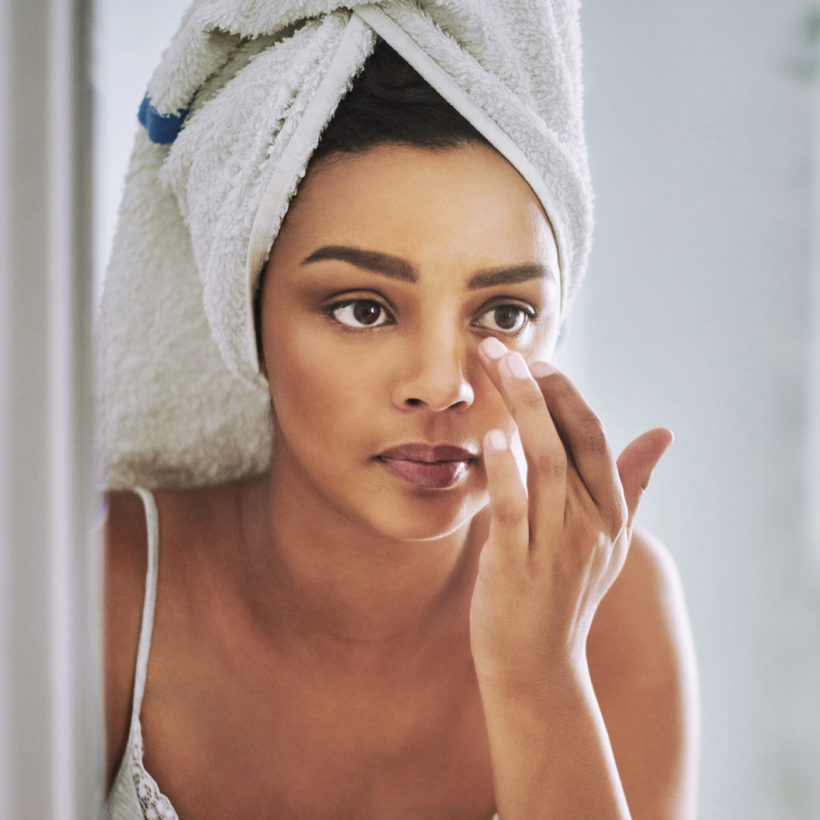Remember a few years back, when everyone (including my mother) ordered a foam roller because we all wanted to roll away our aching backs and slumped shoulders? What many of us didn’t know then is that foam rolling is a form of myofascial release. Basically, it’s a self massage that breaks up adhesions to soothe fascia and sore muscles.
What Is Fascia?

Fascia is the thin layer of connective tissue that wraps around every muscle, organ, and joint in the body. Made up of collagen, elastin, and reticulin, fascia is like a cobweb that connects, protects, and organizes our insides. Fascia is 70% water and 30% fiber; it helps hydrate our body systems and irrigate toxins out of our lymphatic system.
Every moving part of the body is enveloped in fascia and our mobility is highly dependent on having healthy fascia. Aging, stress, injuries, bad posture, poor diet, and lifestyle choices — and even emotional issues — can cause fascia to shorten, thicken, dry out, and tighten. Those aches, pains, and knots you feel after a stressful week sitting in front of your computer are most likely caused by your fascia. It’s not muscle aches. It’s the fascia-surrounding-your-muscle aches.
Meet the Experts
Ashley Black is a fascia pioneer and the founder of the FasciaBlaster Collection.
Unfortunately, if we don’t take care of our fascia, we risk chronic pain and inflammation that can lead to less mobility which creates an ongoing cycle of pain and decreased mobility. No one wants to become that granny hunched over a walker with tennis balls on the bottom!
If this weren’t worrisome enough, there’s a beauty component, too. According to Ashley Black, a fascia pioneer and the founder of the FasciaBlaster Collection, the root cause of cellulite is unhealthy fascia. When fascia thickens and gets sticky, it creates dents in the skin, i.e. cellulite. Black believes this same thickened fascia can cause wrinkles. Repetitive face movements like squinting, stress, and even injections and fillers can create issues with fascia that can turn into wrinkles.
What Can I Do About It?
Break out your foam roller again because it does help release fascia adhesions, but regular movement and stretching as well as keeping an eye on good posture and a healthy diet are basics to do on the daily. Deep tissue massage is another wonderful way to loosen stuck fascia.
There’s also Black’s fascia blasting, which involves using one of her tools (the OG FasciaBlaster looks like a short broom handle with rounded claws on one side), and vigorously running it up and down your skin — on the arms, legs, torso, face, and neck.
“Fascia blasting, in short, regenerates fascia tissue,” says Black. “Everyone is trying to get ‘more or better collagen,’ but do they know why? Fascia is the collagen fibers and we all want our fascia to be smooth, supple, strong and new.
Black is also a believer in facial massage and fascia blasting away signs of aging. “Fascia blasting flattens wrinkles, tightens skin, minimizes scars, lifts the brow, smooths lip lines, and breaks up fat such as double chin or jowls.”
Black has a peer-reviewed and -published study that shows how fascia blasting eradicates cellulite, increases collagen production, decreases inflammation, and regenerates soft tissue.
Does Fascia Blasting Really Work?
I was an early (if infrequent) adopter of Black’s FasciaBlaster. Having birthed two gigantic babies, I was dismayed that my diligent belly butter use hadn’t done a whole lot to keep my tummy skin tight.
The FasciaBlaster, with its vaguely torture-device appearance, seemed worth the $99. I mainly used it in the shower and per Black’s instructions:
- Scrub FasciaBlaster tools on bare skin with oil vigorously (I skipped the oil since I was in the shower). Just 5 minutes per day, 3-5x a week, on the area you want to impact.
- You want to blast very fast with medium pressure. Up and down, side to side, diagonally, but not in circles. You will know you have stimulated circulation in the fascia once the areas turn red.
- You are in control of the pressure, so you control how hard you go. Our advice is to go little by little, layer by layer, and not so hard that it hurts. FasciaBasting is intended to be a pleasurable self-care experience! But sometimes the release is a “hurt so good” one like a deep massage, and if you want that… go for it.
Since I’m an old-school “no pain, no gain” kind of Korean, I super-blasted my stomach, love handles, bra overhang and thighs. It hurt, but in a way that makes you think it’s working, and the skin does turn red like you’ve been smacked. The days after I blasted, my stomach would feel sore, almost like I’d done ab exercises. If I went way too hard, I’d get some small bruises around my torso.
According to Black, these are common side effects, but they weren’t troublesome to me. Because the results? Shocking and immediate. My stomach and waist looked and felt tighter; my skin felt thicker and smoother and my love handles were a little less handle-y. My thighs, which aren’t my biggest problem area, also looked leaner. And this was after a session or two.
I’ve since added the FaceBlaster to my routine and I’ve been stunned by my light crow’s feet disappearing after routine use. I do believe the effects are cumulative, which Black’s legion of fans can show you in their before and after photos.
While I should fascia-blast more regularly, I can say that I’ve never treated my fascia and thought afterwards, “Well, I wish I hadn’t done that.” Taking care of my fascia, whether it’s by foam rolling, fascia blasting, or massage, has always left me feeling better. In fact, now that this article is written, I’m going to have to do some fascia release. (Oof, my back…)







